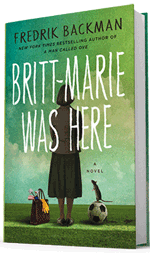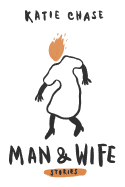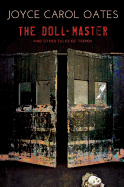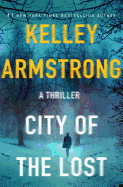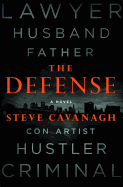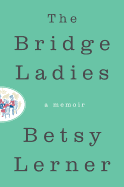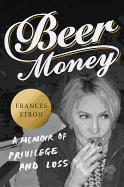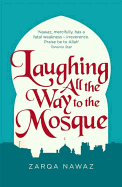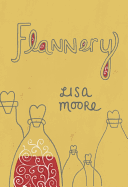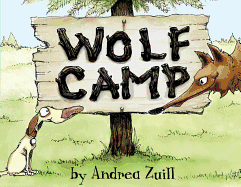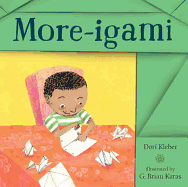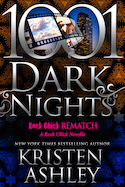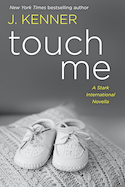 |
| photo: Edward Koinberg |
Fredrik Backman is the author of the novels A Man Called Ove, My Grandmother Asked Me to Tell You She's Sorry and Britt-Marie Was Here. All three books were number-one bestsellers in his native Sweden and are being published in more than 25 languages. He lives in Stockholm with his wife and two children.
You used to drive a forklift. How did that evolve into writing books that are loved around the world?
I don't know. It's still a mystery to everyone who knows me. I always viewed writing as a hobby, not a career choice, and, to be honest, I still do. My dad keeps telling my wife she needs to "treat the money as if Fredrik won the lottery, because this probably won't last!" I think he's got a point. I think I'll eventually go back to having a real job, and I don't really think I'll be any less happy than I am now.
Your first book, A Man Called Ove, had its origins in your blog. How did you get started blogging?
Well, the "origins in the blog" story has turned into somewhat of an urban legend. I think publishers' PR departments love to keep telling it, but it's not really true. There were some elements of the character of Ove that I played around with in my blog and some things I wrote about my dad that the blog readers enjoyed, and that eventually found its way into the novel. I also got the name "Ove" from a very clever blogger called Jonas Cramby, who wrote about how he stood in line at a museum behind an extremely angry man who got into a fight with the staff about the pronunciation of the name of a painter. At the end of the fight the man's wife sighed deeply, took her husband by the arm, and said: "Please, Ove, just let it GO!" And that's where I got the name from. And of course I played around with some jokes and some ideas at the blog, because that's what I do: I steal stuff from people around me and use it in fiction. I suppose most writers do. But…yes…where were we? "How did you get started blogging?" Well... I just started one. It wasn't hard at all. With the risk to sound philosophical I often get the question "how did you become an author?" And I answer that I didn't. I became a writer, by writing, because I like doing it. An author I became by accident.
Why did you decide the Ove posts would work as a novel?
Mostly because I found him funny. He has an unproportional response to everything that makes his anger very entertaining. So the first draft of the novel was just that: a series of situations where he was angry and yelled at people. Fortunately I was surrounded by very clever people--my wife, my friends and, further down the line, my publisher and editor--who told me: "This is funny. But there has to be a story!" So I went back and I started asking myself questions. Who is this man? How was he raised? Who does he love? What makes him laugh? And it grew from there. I started to care about him, and that's always the best start for me. If I don't care, no one will. So I ended up writing a story where I was trying to defend him a little bit, make people know him like I did, and see the good parts of him that make up for the really bad ones.
Just as Ove got his start on your blog, Britt-Marie got her start in your second book, My Grandmother Asked Me to Tell You She's Sorry. When did you know you wanted to tell her story?
I had plans to tell her story in my second book, actually. It was supposed to tell the story of her life in that house and how she fights this quiet war with her neighbors all day long. But, as usual, I couldn't stick to the plan and I had this other story idea about this seven-year-old girl with an imaginary world and a crazy grandmother and they kind of merged with the first one and well... things got out of hand. When my publisher read it, their first response was, "This is too weird, no one will understand it!" To which my wife responded: "Well this is what happens if you leave Fredrik unsupervised in his office for six months; blame yourselves!" So at that time I really had no plans to write a separate novel about Britt-Marie. That idea really came up when I finished My Grandmother. All of a sudden I realized I could let Britt-Marie go out into the world, and it became this kind of coming-of-age-story about a 63-year-old woman.
Britt-Marie tells the woman at the unemployment office that she wants a job because she fears dying and no one knowing she's gone.
Well, fear of dying is crucial in all of my writing, it seems, and I really don't know why. I just end up at that question over and over: How do you live a life? In the case of Britt-Marie I wanted to tell a very undramatic story that was extremely dramatic to HER, if you understand what I mean. I wanted to write a very "low intensity adventure." The novel really has all the same ingredients as Star Wars and Lord of the Rings: our hero goes on a quest, gets challenged, meets new friends, overcomes adversity, stands up to injustice, and eventually learns something about herself. My story didn't have all the laser swords and the space ships and the fire-breathing dragons, but it's still basically the same: the search for our destiny. The dream of changing the world and leaving our mark in it. "I want someone to know that I was here."
Soccer plays a big role in Britt-Marie Was Here. Are you a player? Fan? And, of course, Britt-Marie would ask you, "Who's your team?"
I have an interest in sports in general that I would call "healthy" and my wife would call "deeply disturbing." I watch everything, and I played everything growing up: soccer, tennis, table tennis, handball, floor ball, basketball... everything. Soccer was really my first love, along with ice hockey, since I'm Swedish and that's what we do over here. But I really love it all. I watch every Dallas Cowboys game in the NFL, and I follow Nascar and baseball and rugby and when the Olympics come around I watch curling and luge and... you get the picture.
I love sports, because all sports is essentially story telling. Every moment has drama. You live or die every weekend, and that's just irresistible to me. And oh, yeah, my team? It's Manchester United--Kent's team in the book. Because I thought there was something great about the absolutely worst character in the book loving the same team as me. The second worst character in the book is named "Fredrik," based on the same idea. It keeps me grounded.
In each of your books, an animal has a central role. Do the animals have special significance to you?
No, there wasn't an idea that this would be a returning gimmick. I didn't mean for that to happen. I just like animals. And I think the biggest part of it is that there's something really nice about a character who doesn't speak. You can tell other stories with them.
A crucial part of your writing process is the stewing the ideas; when you've started the physical writing, do you know the complete story?
There's no formula, if that's the question. I really WISH there was a formula, but I just haven't figured that out yet. The thing is: I'm not a very good writer. And I don't say that to be humble, I'm just saying that I'm not very good technically. I'm better at telling stories than constructing language, which I think can be compared to musicians: the best song writers are rarely the best musicians. You can write a great song using three chords, but that doesn't make you Mozart. So sometimes I have the full story, and sometimes I don't. I rewrote My Grandmother maybe 50 times, but I rewrote Britt-Marie maybe five.
Maybe I could put it like this: I have learned to build a "box" for me to play within. Which means I decide the world my character gets to explore, and the limits of it, and I try to write a beginning and an ending to the story first of all. That way I'm free to have new ideas within it, but I have certain boundaries that force me to actually finish the story at some point. Otherwise I would probably just keep on going and every novel would be 60,000 pages long.
Do the incredible imagery and hilarious examples come as you're writing or are they things you tweak and adjust later?
Most come as I'm writing, I think. What you see in the novels, with one joke in one sentence, are just the version of the story where I've taken nine other jokes out of the same sentence and kept the one that actually worked.
You have a fouth book coming out in Sweden later this year, and then what do you see for the future?
The next novel is a bit more serious. It's about a town, not one specific character. And it centers a lot around ice hockey. And the future? I plan to write until people tell me I can't anymore. That's the only idea I have so far. --Jen Forbus

 Even so, City of the Lost seems to have a bit of the fantastical in it: spooky events, "hostiles," possible cannibalism, feral animals. To Armstrong, "That really was both the appeal and creative challenge of [the town of] Rockton--hardcore world building within a realistic setting. Rockton has all the elements I'd incorporate in a fantasy world--a physical place, an economy, political system, legal system, etc. I added the threats that lurk beyond its borders, rooted in reality. Instead of werewolves, you have feral dogs; instead of zombies, you have ex-residents living in the forest, who might not be above resorting to cannibalism over a hard winter. It was an incredibly fun exercise in incorporating the things I love about fantasy in a non-fantasy novel."
Even so, City of the Lost seems to have a bit of the fantastical in it: spooky events, "hostiles," possible cannibalism, feral animals. To Armstrong, "That really was both the appeal and creative challenge of [the town of] Rockton--hardcore world building within a realistic setting. Rockton has all the elements I'd incorporate in a fantasy world--a physical place, an economy, political system, legal system, etc. I added the threats that lurk beyond its borders, rooted in reality. Instead of werewolves, you have feral dogs; instead of zombies, you have ex-residents living in the forest, who might not be above resorting to cannibalism over a hard winter. It was an incredibly fun exercise in incorporating the things I love about fantasy in a non-fantasy novel."




